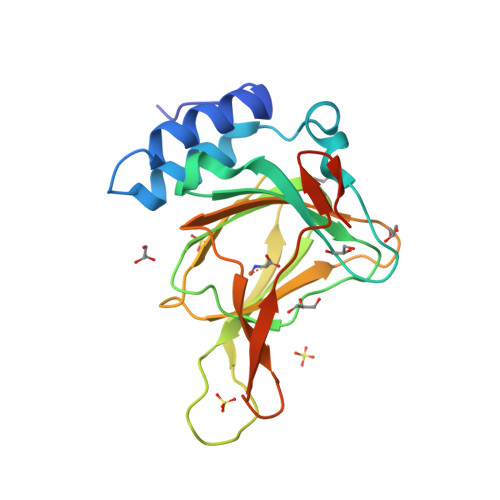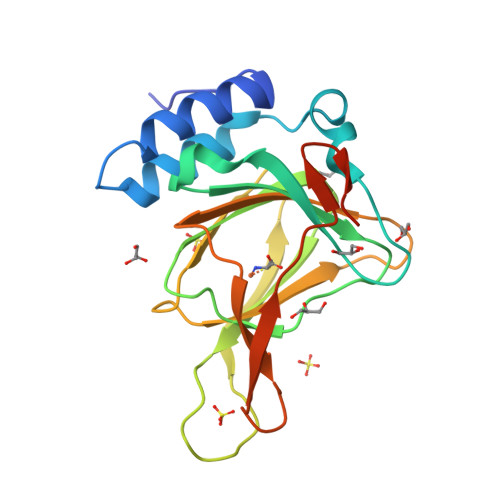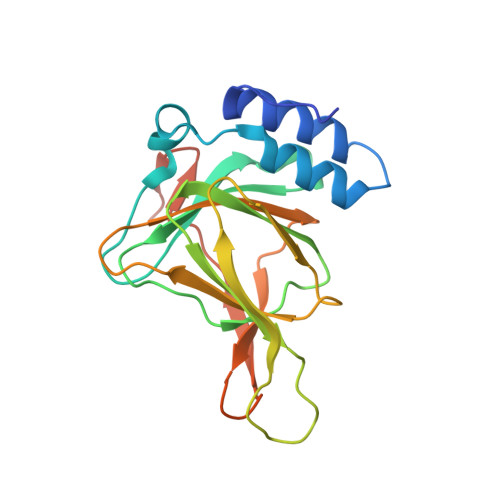Probing the Cys-Tyr Cofactor Biogenesis in Cysteine Dioxygenase by the Genetic Incorporation of Fluorotyrosine.
Li, J., Koto, T., Davis, I., Liu, A.(2019) Biochemistry 58: 2218-2227
- PubMed: 30946568
- DOI: https://doi.org/10.1021/acs.biochem.9b00006
- Primary Citation of Related Structures:
6BPR, 6E87, 6N42, 6N43 - PubMed Abstract:
Cysteine dioxygenase (CDO) is a nonheme iron enzyme that adds two oxygen atoms from dioxygen to the sulfur atom of l-cysteine. Adjacent to the iron site of mammalian CDO, there is a post-translationally generated Cys-Tyr cofactor, whose presence substantially enhances the oxygenase activity. The formation of the Cys-Tyr cofactor in CDO is an autocatalytic process, and it is challenging to study by traditional techniques because the cross-linking reaction is a side, uncoupled, single-turnover oxidation buried among multiple turnovers of l-cysteine oxygenation. Here, we take advantage of our recent success in obtaining a purely uncross-linked human CDO due to site-specific incorporation of 3,5-difluoro-l-tyrosine (F 2 -Tyr) at the cross-linking site through the genetic code expansion strategy. Using EPR spectroscopy, we show that nitric oxide ( • NO), an oxygen surrogate, similarly binds to uncross-linked F 2 -Tyr157 CDO as in wild-type human CDO. We determined X-ray crystal structures of uncross-linked F 2 -Tyr157 CDO and mature wild-type CDO in complex with both l-cysteine and • NO. These structural data reveal that the active site cysteine (Cys93 in the human enzyme), rather than the generally expected tyrosine (i.e., Tyr157), is well-aligned to be oxidized should the normal oxidation reaction uncouple. This structure-based understanding is further supported by a computational study with models built on the uncross-linked ternary complex structure. Together, these results strongly suggest that the first target to oxidize during the iron-assisted Cys-Tyr cofactor biogenesis is Cys93. Based on these data, a plausible reaction mechanism implementing a cysteine radical involved in the cross-link formation is proposed.
Organizational Affiliation:
Department of Chemistry , University of Texas at San Antonio , San Antonio , Texas 78249 , United States.




















